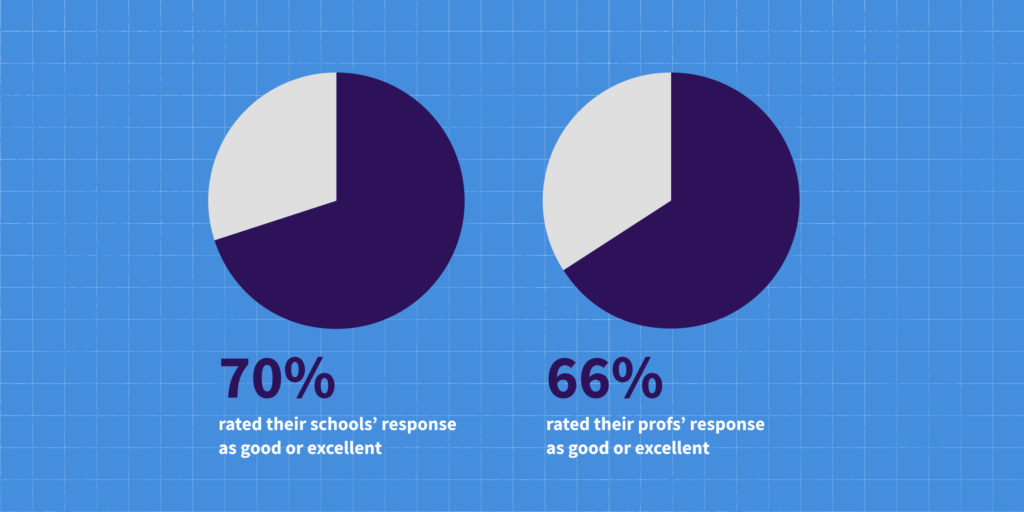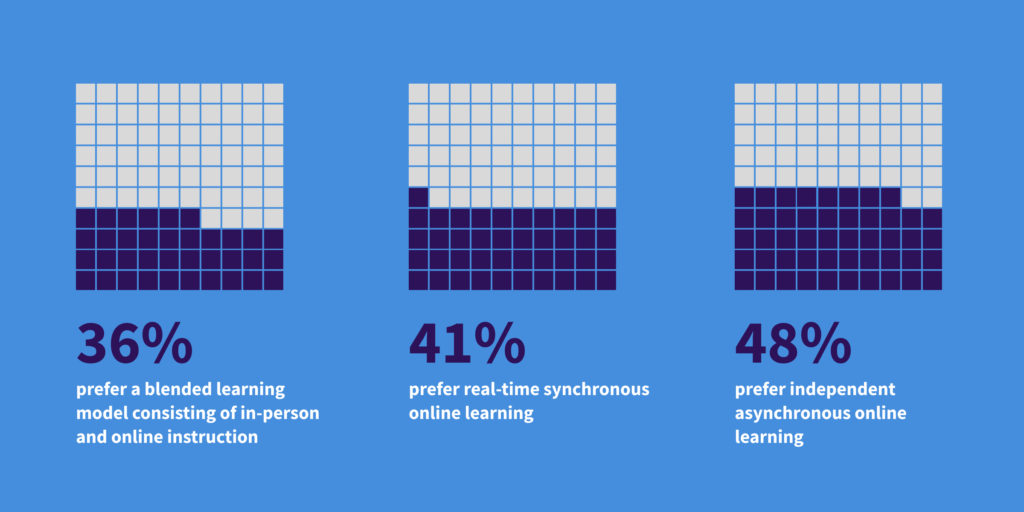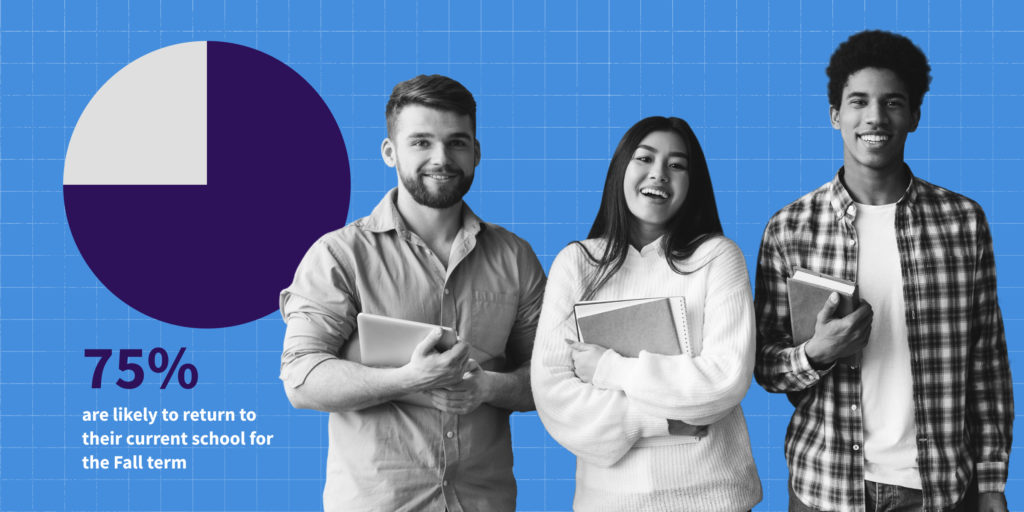Since March 2020, computer screens have divided students and their instructors across the globe—and it’s been a challenge for both parties. As college presidents churn out updated learning plans, the fall 2020 semester is set to be a mixed bag. Some schools plan on delivering hybrid courses, others consider an in-person approach, while virtual classes still remain a possibility. Regardless of students’ experiences with the latter half of the winter semester, many see light at the end of the tunnel.
Recently, we polled 3,089 higher education students in North America to better understand how they’ve been impacted by the transition to online learning. In part one of a three-part series we created to discuss the results of that survey, we highlighted students’ challenges with staying engaged in an online learning environment. Part two outlined how students’ socioeconomic opportunities have suffered due to school closures. Here in part three, we share students’ hopes for the fall semester.
Students are empathetic towards their schools and professors
Many college administrators and professors had to scramble to develop online learning plans and facilitate school-wide shifts to digital-only instruction. The empathy that students received from their schools is reciprocated. Students value the care and concern, flexibility and adjustments to curriculum or policies. While no one could have predicted worldwide school closures, responses from colleges and faculty have reassured students in a period of uncertainty.

Students hope to have virtual elements in future courses
Students have slowly warmed up to the idea of online learning. While in-person learning provides an irreplaceable social experience, many students prefer learning with the aid of online tools and platforms. Students are comfortable with blended learning solutions, many of which were already in place before the pandemic—such as having a virtual class-wide discussion board to complement in-class conversations. Since online learning took flight though, many hope to continue learning at a time and pace that best suits them.

Flexibility must be top of mind if students are to return to school in the fall
Online learning didn’t win over all students, but many saw value in this new mode of course delivery. Depending on asynchronous or synchronous methods used, online learning allowed students to design a schedule that worked for them. Prior to the pandemic, first-year students’ persistence rates, which indicates the overall percentage of students planning to return to their schools in the following academic year1, sat at 78 percent. Our report shows that number hasn’t drastically changed since, demonstrating that students still crave the prospect of returning to the familiarity of their campus.

The winter semester served as a dry-run for what may become the new normal in higher ed—one where online learning thrives. Students understood that this was potentially a foreign experience for faculty and staff, but in the upcoming semester, they will likely be less forgiving. To have a successful online learning experience in the fall, students call for more social experiences with faculty and peers, enhanced coordination between administrators and faculty and better support materials offered by their schools. Most students are still quite new to this playing field. Acting upon these insights can provide an enjoyable and less stressful experience for everyone.
Survey methodology
Survey responses were collected by Top Hat from 3,089 college and university students from across North America between April 15 and 20, 2020. Forty (40) percent of respondents were first-year students, 27 percent were in their second year, 19 percent were in their third year and 14 percent were in their fourth year.
Empathy and flexibility have gone a long way to helping students since remote learning began. What else do students need to feel comfortable before returning to campus in the fall? Understand the factors contributing to students’ optimism about the fall semester in our free student survey report, which you can download here.
References
- >Persistence and Retention, NSC Research Center 2018, https://nscresearchcenter.org/snapshotreport33-first-year-persistence-and-retention/


